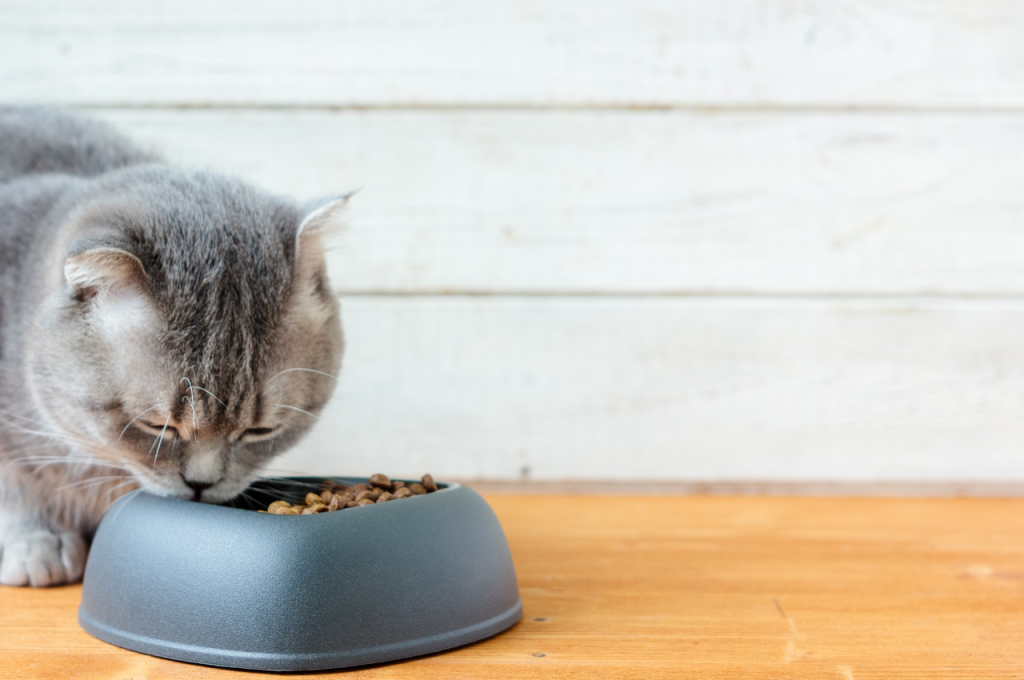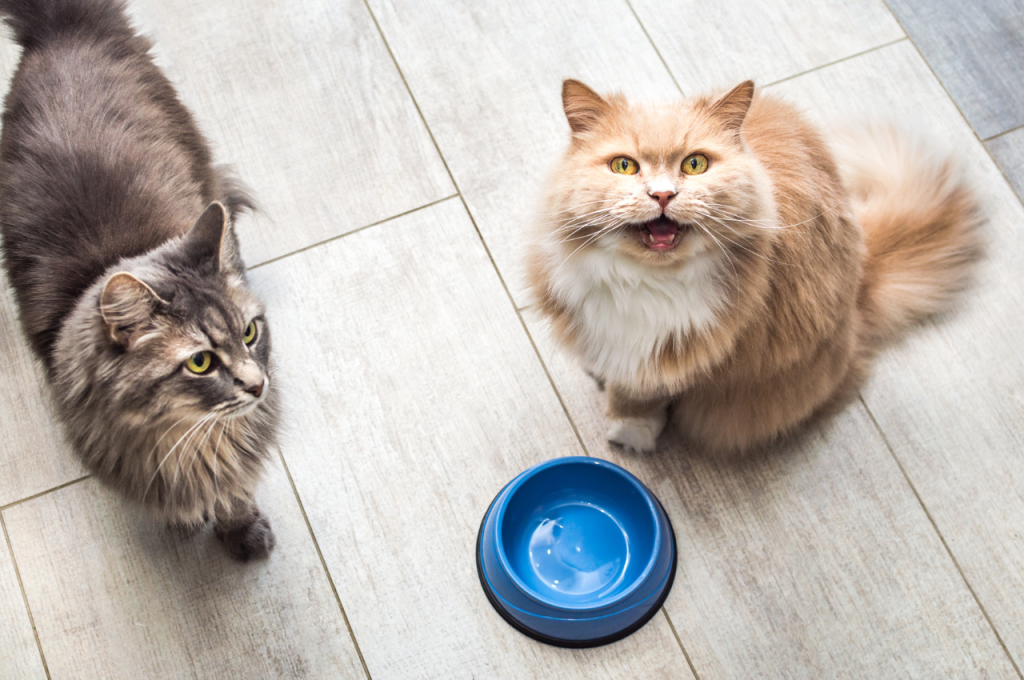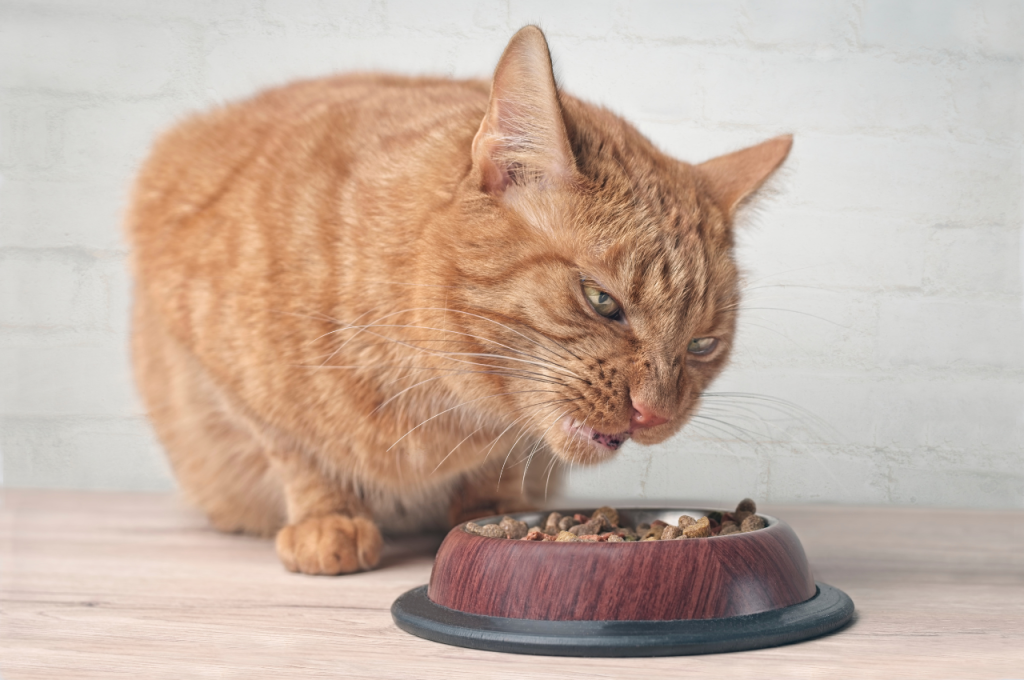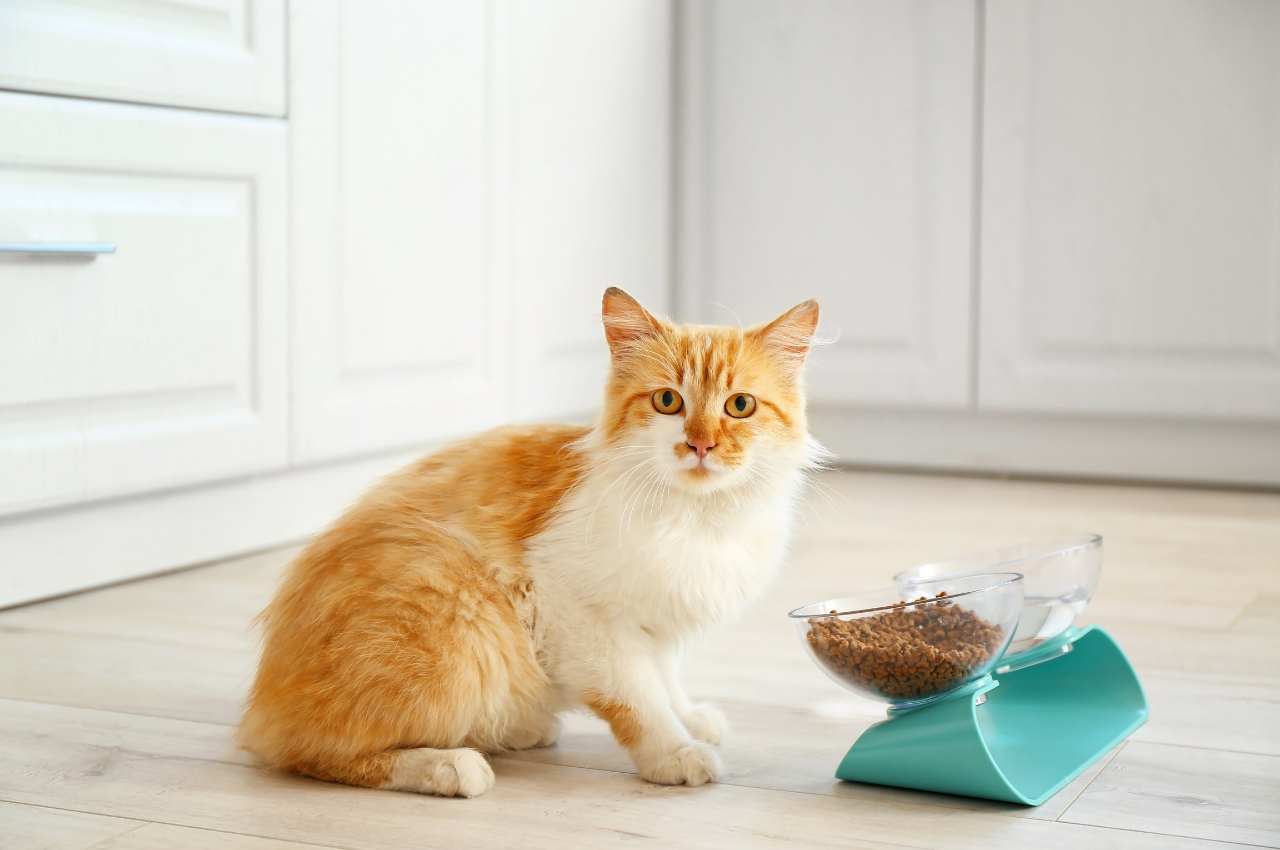Low-calorie cat food can help with weight management and promote a healthier lifestyle for your feline companion. Packed with essential nutrients, low-calorie cat food can aid in maintaining a balanced diet for your pet.
It offers a great way to keep your cat feeling full and satisfied while reducing their calorie intake. Choosing the right low-calorie cat food can be crucial for your pet’s health. With so many options available, it’s important to consider your cat’s specific needs, age, and activity level.
In this guide, we will explore the benefits of low-calorie cat food, considerations for choosing the best option, and tips for transitioning your cat to a new diet. By the end, you’ll have a better understanding of how low-calorie cat food can benefit your feline friend.
The Importance of Low-Calorie Cat Food
Cats, like humans, can struggle with weight issues. The importance of low-calorie cat food cannot be understated, as it plays a crucial role in maintaining the health and well-being of our feline companions. Providing cats with low-calorie food can help prevent obesity-related health problems and ensure they lead long happy lives. In this article, we will explore the health benefits of a low-calorie diet for cats and the risks associated with overweight cats.

Health Benefits of Low-Calorie Diet
Feeding your cat low-calorie food offers numerous health advantages. Firstly, it helps in maintaining a healthy weight, reducing the risk of obesity-related diseases such as diabetes and arthritis. Low-calorie cat food also supports healthy metabolism and increases energy levels, allowing cats to stay active and playful. Moreover, it can lead to a shinier coat, reduced shedding, and overall improved skin and coat health.
Risks of Overweight Cats
Overweight cats face serious health risks. Obesity can lead to an increased risk of diabetes, heart disease, and joint problems. Additionally, overweight cats may experience a reduced lifespan and overall reduced quality of life. Cat owners must recognize the dangers associated with feline obesity and take steps toward maintaining a healthy weight through low-calorie cat food and regular exercise.
Understanding Cat Nutrition
Cats, like all animals, require a balanced diet to maintain optimal health and well-being. Understanding their nutritional needs is essential for selecting the right food to support their overall health. Here are key aspects of cat nutrition to consider:
Essential Nutrients for Cats
Cats require a balanced diet containing essential nutrients for their overall well-being.
- Protein: Crucial for muscle growth and repair.
- Fats: Provide energy and support skin health.
- Carbohydrates: Offer a source of energy.
- Vitamins and Minerals: Essential for various bodily functions.
Impact of Caloric Intake on Weight
The caloric intake significantly impacts a cat’s weight management.
- Excess calories can lead to obesity.
- Feeding low-calorie cat food aids in weight control.
| Low-Calorie Cat Food Benefits |
| Supports healthy weight management |
| Prevents obesity-related health issues |
Choosing The Right Low-Calorie Cat Food
Choosing the Right Low-Calorie Cat Food is essential for managing your feline friend’s weight and overall health. With the plethora of options available, it’s important to understand how to make an informed decision that benefits your cat’s well-being. Reading cat food labels and identifying key ingredients are integral steps in ensuring you choose the best low-calorie cat food for your pet.
Reading Cat Food Labels
Cat food labels provide crucial information about the nutritional content of the product. When selecting low-calorie cat food, pay close attention to the calorie content per serving, ensuring it aligns with your cat’s dietary needs. Look for labels that specify “low calorie” or “weight management” to guarantee you’re purchasing the right product.
Key elements to look for
Opt for low-calorie cat food with high-quality protein sources like chicken or fish. Avoid fillers such as corn, wheat, or soy, as they can contribute to unnecessary weight gain in your cat. Look for added vitamins, minerals, and omega-3 fatty acids, which contribute to overall health and well-being. Ingredients like fiber and taurine are also beneficial for weight management and maintaining a healthy metabolism.
Transitioning Your Cat to a Low-Calorie Diet
Transition your cat to a low-calorie diet effortlessly with our range of nutritionally balanced low-calorie cat food options. Keep your feline friend healthy and trim without compromising on taste or essential nutrients.
Transitioning Your Cat to a Low-Calorie Diet Gradually transforming your cat’s diet to a low-calorie one is crucial for their health and well-being. Abruptly changing their food can upset their digestive system and lead to other health issues. Follow this gradual diet change process to ensure a smooth transition that your feline friend will appreciate.
Gradual Diet Change Process
When introducing low-calorie cat food, take it slow to avoid any food aversions or gastrointestinal distress. Here’s a step-by-step guide to transitioning your cat to a low-calorie diet:
- Start by mixing small amounts of the new low-calorie cat food with their current food.
- Slowly increase the proportion of the new food while decreasing the old one over 7-10 days.
- Observe your cat’s reaction during the process. If they experience any digestive issues or refuse the food, slow down the transition even further.
- Be patient! Cats can be resistant to change, so giving them time to adjust is important.
Monitoring Your Cat’s Health Throughout the transition, it’s essential to closely monitor your cat’s health.
Monitoring Your Cat’s Health
- Weigh your cat regularly to track their progress, Sudden weight loss or gain may indicate that adjustments are necessary.
- Observe their energy levels, A healthy cat should be active, alert, and engaged in their surroundings.
- Check their coat condition, A shiny, lustrous coat generally indicates good health.
- Pay attention to their litter box habits. Any irregularities such as changes in frequency or consistency should be noted.
- Consult a veterinarian if you notice any concerning changes in your cat’s health during the transition.
Cats have unique dietary requirements, so transitioning them to a low-calorie diet requires attention and care. By following these steps and monitoring your cat’s health, you can ensure a successful and smooth transition to their new low-calorie cat food. Remember, patience is key, and the ultimate goal is to improve your cat’s well-being and help them maintain a healthy weight.

Creating A Healthy Feeding Routine
Establishing a consistent and balanced feeding routine is essential for promoting your cat’s overall health and well-being.
Portion Control
Feeding your cat appropriately sized portions is key to managing their calorie intake.
- Use a measuring cup to ensure you are providing the right amount of food based on your cat’s weight and activity level.
- Avoid overfeeding, as excess calories can lead to weight gain and other health issues.
Feeding Schedule
Establishing a regular feeding routine helps maintain your cat’s metabolism and prevents overeating.
- Feed your cat at the same times each day to create a sense of routine and stability.
- Divide their daily food into small, frequent meals to keep them satisfied and prevent hunger-induced overeating.
Incorporating Exercise into Your Cat’s Routine
Regular exercise is essential for maintaining your cat’s overall health and well-being. Just like humans, cats need physical activity to stay fit, prevent obesity, and enhance their mental stimulation. Incorporating exercise into your cat’s routine doesn’t have to be a difficult task. With a few simple steps, you can encourage your feline friend to stay active and healthy. In this blog post, we will explore some effective ways to promote physical activity for your cat.
Interactive Playtime
One of the easiest and most enjoyable ways to ensure your cat gets the exercise it needs is through interactive playtime. This type of play involves engaging your cat in activities that stimulate their natural hunting instincts. Investing in interactive toys such as feather wands, laser pointers, or treat puzzles can provide endless entertainment while encouraging physical movement. Set aside dedicated play sessions throughout the day to keep your cat active and mentally engaged.
Encouraging Physical Activity
In addition to interactive play, there are several other strategies you can use to encourage physical activity in your cat. Here are some effective techniques:
- Vertical Spaces: Cats love heights, so providing them with tall scratching posts, cat trees, or window perches can promote climbing and jumping exercises. These vertical spaces not only help your cat stay active but also offer them a sense of security and territory.
- Outdoor Enclosures: If you have a safe and secure outdoor space, consider investing in an outdoor enclosure or harness training your cat. This allows your feline friend to explore the outside world while getting some fresh air and exercise under supervision.
- Routine Walks: While walking a cat may not be as common as walking a dog, some cats can be trained to walk on a leash. Gradually introduce your cat to a harness and leash, and take short walks in a quiet, familiar environment. Remember to be patient and always prioritize your cat’s comfort.
By incorporating these activities into your cat’s routine, you can ensure they receive the exercise they need to maintain a healthy weight and stimulate their instincts. Remember to consult with your veterinarian before implementing any major changes to your cat’s exercise routine. With a little effort and creativity, you can provide your furry companion with a happy and active lifestyle.
Managing Your Cat’s Weight Loss Progress
Weight management is crucial for a cat’s overall health, and monitoring their progress is an essential part of the process. Here are steps to effectively manage your cat’s weight loss:
Recipes for Homemade Low-Calorie Cat Treats
When it comes to keeping our beloved feline friends happy and healthy, finding the right low-calorie cat food is essential. But why stop there? You can go a step further and create homemade low-calorie cat treats that your kitty will love. Not only are these treats delicious, but they are also simple to make and packed with essential nutrients.
Simple and Nutritious Treat Ideas
If you’re on the lookout for quick and easy recipes for homemade low-calorie cat treats, look no further. These delicious recipes will keep your cat happy without adding unnecessary calories to their diet.
1. Tuna Delight:
Ingredients:
| Ingredients | Amount |
| Canned tuna (in water) | 1 can |
| Whole grain flour | 1 cup |
| Egg | 1 |
| Water | ¼ cup |
Instructions:
- Preheat the oven to 350°F (175°C).
- Drain the canned tuna and mix it with the flour in a bowl.
- Add the egg and water, and stir until the dough forms.
- Roll out the dough and use a cookie cutter to create small treat shapes.
- Place the treats on a baking sheet and bake for 15 minutes.
- Allow the treats to cool before serving them to your cat.
2. Chicken Nuggets:
Ingredients:
| Ingredients | Amount |
| Chicken breast (cooked and shredded) | 1 cup |
| Pumpkin puree | ½ cup |
| Brown rice flour | ¼ cup |
| Egg | 1 |
Instructions:
- Preheat the oven to 350°F (175°C).
- Mix the shredded chicken, pumpkin puree, brown rice flour, and egg in a bowl.
- Form small nuggets from the mixture and place them on a baking sheet.
- Bake for 20-25 minutes until golden brown.
- Let the nuggets cool before offering them to your cat.
Understanding Portion Size
While homemade low-calorie cat treats are a great addition to your feline’s diet, it’s important to understand portion sizes. Treats should only constitute a small part of your cat’s daily calorie intake, ensuring that they receive all the essential nutrients from their regular low-calorie meals. Be sure to consult your veterinarian to determine the appropriate portion size based on your cat’s specific needs.

Conclusion
Ensure your feline’s diet is balanced with low-calorie cat food for their health. Opt for quality brands that prioritize nutrition without sacrificing taste. Your cat will thrive on a diet tailored to their needs, promoting their overall well-being and longevity.
Choose wisely for a happy, healthy kitty!
